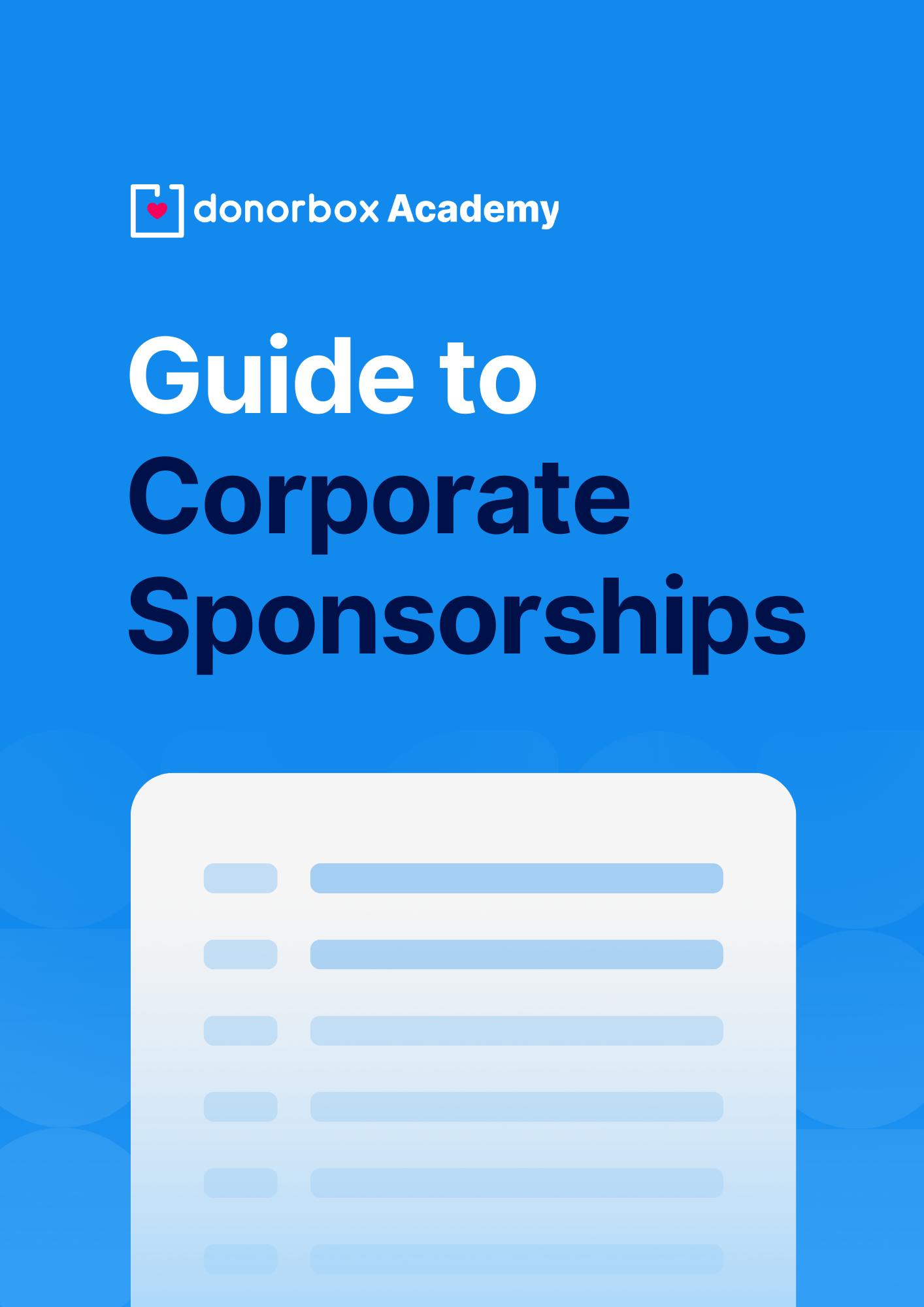Corporate sponsorships can truly help your nonprofit organization thrive. Yes, they can bring in additional donations for your mission, but they can also help you spread awareness and establish a positive reputation for your nonprofit, as well as your partner.
There are many different types of corporate sponsorships, including (but not limited to):
- • Program Sponsorship – When a business sponsors a specific program that helps your beneficiaries, such as a summer camp or food pantry.
- • Event Sponsorship – When a company sponsors part or all of your event to offset costs, ensuring that more funds from ticket sales and other fundraising activities go directly to your mission. Check out tips specific to event sponsorships here.
- • Employee Giving Programs – A business may be willing to match donations made to your organization by their employees, or even off the option to have gifts automatically deducted from their paychecks. Some companies offer fun incentives to raise money, such as the ability to wear jeans or a silly hat to work in exchange for a $5 donation.
- • In-Kind Donations – Whether to your programs, your events, or your general organization, some businesses may be willing to donate physical items or services in place of monetary donations. For example, a bike store may donate helmets to your safety class or a photographer may be willing to capture your event at a discounted rate or even free of charge.
When it comes to building your own sponsorship program, you’ll first need to sit down and decide which types of sponsorships you’d like to offer. You may want to offer different types of sponsorships for various events or programs, or even during different times of the year, so keep that in mind! You’ll also need to set up sponsorship packages or levels, as well as set a price for each, and create sponsorship packets that will help you better present the available opportunities. Our free Guide to Corporate Sponsorships above can help!
From there, it’ll be time to reach out to area businesses with your sponsorship proposals. Here are a few steps to help guide you through this process:
- Identify target sponsors – Not all businesses will make sense as a partner for your organization. Be sure to do your research in advance and come up with a list of businesses and corporations that best align with your mission and values.
- Identify a target contact – While doing your research, also be sure to determine the best person to reach out to at the organization – if you send your proposal to the incorrect contact, it’s possible no one will ever see it! You can also check to see if anyone within your nonprofit has a connection at the target business.
- Create and send a proposal – Draft a proposal letter or email specifically targeted to the business you are engaging with, and the person you are contacting there. You can find a corporate sponsorship proposal template in the Guide to Corporate Sponsorships above.
- Set up a meeting – For highly detailed sponsorship opportunities, it’s best to host a meeting or phone call with your contact so that you can outline expectations and determine exactly how your new partnership will work for both parties.
- OR send a sponsorship form – Either within the proposal or in a follow-up after interest is shown, send an online sponsorship form (check out the guide above for an example with a Donorbox form) detailing each of the tiers and what the business will receive for each level of sponsorship. This enables the business to easily manage their own sponsorship of your nonprofit or event.
- Say thank you – Just like with an individual donor, you need to be sure to thank your corporate sponsors and show them the direct impact their sponsorship has on your mission. If you can, also invite them to visit your facility or program to really showcase what it is you do. The second corporate sponsorship proposal template in our Guide to Corporate Sponsorships above details how to include all of this in one email.
Looking for more? Check out this guide to securing corporate sponsorships on our blog.








